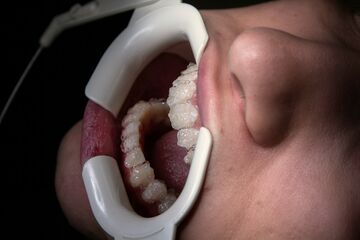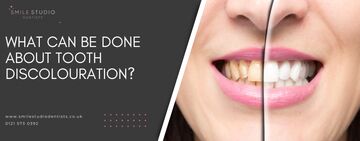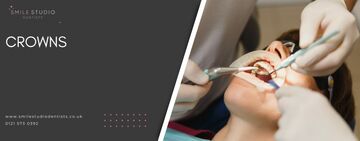
What Can Cause Tooth Discoloration and Stains?
11.04.2024
Tooth discoloration is one of the top reasons that patients turn to cosmetic dentistry. If you aren’t blessed with naturally bright white teeth, you might be curious about methods you could try to achieve a whiter smile.
The colour of your teeth will be determined by a number of factors. To understand why teeth become discoloured, we first need to understand the structure of the teeth.
The centre of the tooth is made up of dentin, which is a denser bone structure, typically darker or pale yellow in colour. This is covered and protected by a layer or enamel, which is naturally white and slightly translucent. Some people will have naturally yellow teeth, as their dentin is more yellow and this can be seen through the translucent enamel.
Discolouration can occur for a variety of reasons, including damage to the enamel, staining from food and drink, lifestyle choices such as smoking, poor oral hygiene and trauma to the tooth.
In this guide, we’re taking a deep dive into the causes of tooth discoloration and how you can address each type of staining.

What can be done about tooth discolouration?
If you’re unhappy with the colour of your teeth, there is nearly always something that can be done about it. Here are some of the options available to you if you’re unhappy with the colour of your teeth.
Dental hygienist cleaning
The first step in achieving a brighter smile is to visit the dental hygienist. A deep cleaning can start the process by removing any surface stains and ensuring that you’re working with a fresh canvas.
A scale and polish can now be completed with a concentrated stream of water, air and fine particles. This helps to buff away stains from the surface of your teeth without having to use any sharp instruments against your teeth.
Before you explore any other teeth whitening options, it’s always a good idea to start with a dental hygienist cleaning so that you know your teeth are healthy and clean.
Teeth whitening
Professional teeth whitening is different to at-home methods such as whitening toothpaste and whitening strips. The methods provided by your dentist will be much more effective, as they contain a higher concentration of whitening chemicals.
The most common method is at-home whitening. Your dentist will create custom mouth trays for your teeth and then you will apply a whitening gel at home. This is often left for a few hours or overnight, depending on your system. This method is repeated over a period of time until the desired result is achieved.
You could also opt for in-chair teeth whitening. This is often a faster method that uses a higher concentration of chemicals that are safe when used under dental supervision. The process is accelerated with a UV light.
Teeth whitening will remove deep-set stains within your enamel, but it cannot address issues related to injury or decay. And if you have naturally yellow dentin and thin enamel, you might not be able to achieve the kind of results you are looking for.

Veneers
If teeth whitening is not effective for you, you may want to consider alternative treatments to improve your smile such as veneers. Veneers are thin shells of porcelain that fit on the front of your teeth and change the appearance of your smile.
If you have a teeth whitening issue that cannot be addressed with whitening – or if you are keen to fix more than just the shade of your teeth – then veneers could be an ideal choice for you. Veneers could also be effective for giving you the appearance of a straighter and more balanced smile.
Veneers are a permanent restoration, which means you will need to commit to wearing them for the rest of your life. However, they may need to be replaced or repaired at some point, so it’s important to consider the lifetime cost of this treatment, particularly if you are younger.
Composite bonding
If you have just one tooth that is resistant to teeth whitening, this can be troubling. This could be the result of trauma to a tooth that causes it to become darker or discoloured. Meditations could also lead to discolouration that cannot be addressed with teeth whitening treatments.
Composite bonding is a highly cost-effective treatment that could allow you to whiten individual teeth so they look more uniform with the rest of your smile. With this treatment, a composite resin is applied directly to your teeth and then shaped. It is then cured with UV light to harden it before it is polished to perfection.
The result is an instant restoration of a single tooth or multiple teeth, depending on the extent of the issue. While not traditionally a whitening method, this can be highly effective for giving the appearance of whiter and brighter teeth.

Crowns
Another method for addressing discoloration for a single tooth would be a dental crown. Teeth that are badly damaged by decay will often turn dark grey, and this won’t go away, even if the tooth is saved by root canal treatment. When this happens, the only way forward to restore the whiteness of the tooth would be to top it with a crown.
Crowns are similar to veneers but they are for single teeth rather than multiple teeth. This can also help to restore some of the strength of a badly damaged or decaying tooth, allowing you to keep your natural tooth intact for longer.
Final thoughts
As you can see, there are lots of reasons your teeth could be discoloured. But thankfully, there are also lots of remedies to help address tooth discolouration.
If you’re concerned about the colour of your teeth, the first step is to visit the dentist to learn more about the cause of your dental discoloration. From there, you can work together to create a treatment plan that will work for your budget and your goals.
To start the conversation with our cosmetic dental team, get in touch to book a consultation today.